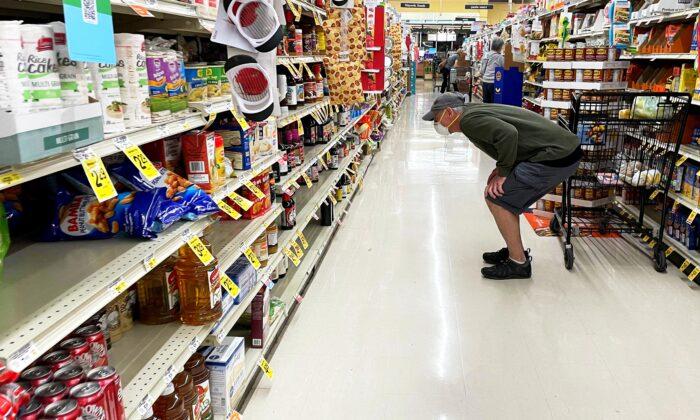This matched economists’ expectations and is the lowest reading since September 2021.
The core consumer price index (CPI), which strips the volatile food and energy sectors, slowed to 5.5 percent, down from 5.6 percent. This also was in line with market estimates.
On a month-over-month basis, the CPI climbed 0.5 percent, and the core CPI rose 0.5 percent.
The food index eased to 9.5 percent year-over-year and jumped 0.4 percent from December to January. The energy index was 5.2 percent higher than at the same time a year ago and it fell 0.6 percent month-over-month.
New vehicles inched higher by 0.2 percent, used cars and trucks declined by 2.8 percent, apparel rose by 0.8 percent, and medical care commodities were roughly unchanged.
Shelter rose 8.1 percent year-over-year and 0.8 percent month-over-month. Transportation services surged 1.1 percent on a monthly basis, and medical care services dropped 0.7 percent.
There were many notable developments in the CPI in goods and services from January to February.
Egg prices declined 6.7 percent, although they were up more than 55 percent from a year ago. Beef and veal rose 0.6 percent, ham 3.3 percent, fish and seafood 1.5 percent, bananas 1.7 percent, and potatoes 2.8 percent. Baby food was still elevated, rising 0.5 percent.
On the energy front, gasoline picked up 1 percent, electricity costs rose 0.5 percent, and utility-piped gas services plummeted 8 percent.
Shelter, which economists considered to be a lagging indicator of between six and nine months, continued to trend higher. The shelter index rose 0.8 percent month-over-month, and rent of shelter and primary residence surged 0.7 and 0.8 percent, respectively.
“Housing costs are dropping, yet the flawed methodology of using outdated leases, has today’s data showing another laughable large jump in housing costs and falsely indicating housing is rising at [a] 9 percent annualized rate!” reads a note from Bryce Doty, the senior portfolio manager at Sit Fixed Income Advisers.
“Reality is that rents and home prices are falling so core CPI is running closer to a 3.5 percent annualized rate. As a result, the Fed can pause, given the fed funds is at a positive real rate when using a more accurate measure for housing.”
Services inflation—medical care, transportation, personal care, and financial—was unchanged at 7.6 percent.
Financial markets rallied in pre-market trading, with all three leading benchmark indexes up at least 0.6 percent.
The U.S. Dollar Index, a measurement of the dollar against a basket of currencies, traded higher at about 103.80.
Inflation Persistence
Looking ahead to next month’s CPI reading, the Federal Reserve Bank of Cleveland’s Inflation Nowcasting estimated that the annual inflation rate will ease to 5.4 percent and rise 0.3 percent month-over-month.The three-year-ahead expectations were flat at 2.7 percent, and the five-year-ahead metric edged up 0.1 percent to 2.6 percent.
In addition, the Personal Consumption Expenditure (PCE) price index—the Fed’s preferred inflation measurement—is expected to slow to 4.5 percent year-over-year and rise 0.3 percent month-over-month.
Economists found that the MCT level is higher, and the downward trend from the summer peak is less immense than previously seen. In addition, they alluded to the core goods and core services ex-housing components as to why inflation has been persistent.
Markets Debate Another Rate Hike
In the aftermath of the collapse of Silicon Valley Bank, Silvergate, and Signature Bank, the financial markets are debating whether the central bank will raise interest rates by a quarter point at this month’s Federal Open Market Committee policy meeting or hit the pause button.Goldman Sachs analysts no longer anticipate a rate hike this month, leaving its expectations unchanged for quarter-point increases in May, June, and July. As a result, the financial institution is penciling in a terminal rate of 5.25 percent and 5.5 percent.
Renowned economist Mohamed El-Erian has been watching the crash in U.S. Treasury yields as signals that the Fed could suspend its inflation-fighting tightening campaign.
“The immediate move in two-year bonds points to the view that, by treating this as a systemic threat, the #Fed will also retreat from its #inflation battle.”
The two-year yield has mostly tanked since March 8, plunging from a 16-year high above 5 percent to 4.1 percent.
Market observers say that the Fed is stuck between a rock and a hard place: keep raising rates and leave the banking system vulnerable to a tightening climate or pivot and bail out banks with poor balance sheets while inflation runs higher.





